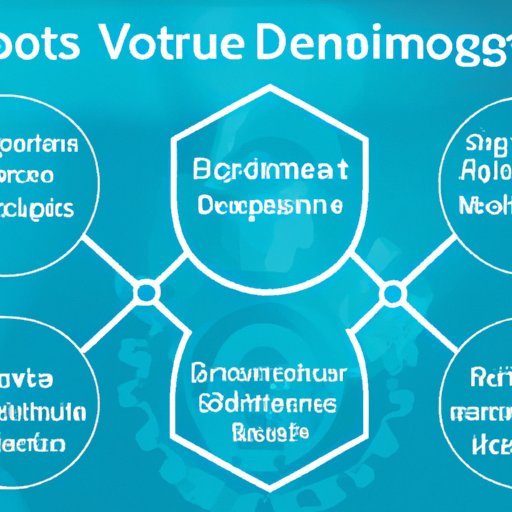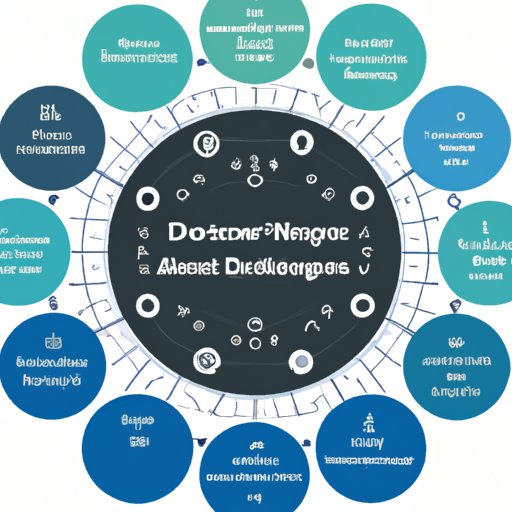Introduction
DevOps automation is a process of automating development and operations tasks to increase the speed and efficiency of software delivery. It enables organizations to quickly respond to customer demands and deploy applications faster than ever before. By automating manual processes and streamlining workflows, DevOps automation helps teams deliver high-quality software faster and with greater reliability.
Definition of DevOps Automation
DevOps automation is the use of tools, technologies and processes to automate development and operations tasks. This includes the automation of application and infrastructure deployment, configuration management, continuous integration and delivery (CI/CD), logging and monitoring, and more. In a nutshell, DevOps automation is all about using automation to speed up the software development and delivery process, while also reducing the risk of errors and increasing reliability.
Benefits of DevOps Automation
DevOps automation offers numerous benefits to organizations, including:
- Faster and more reliable software deployments.
- Reduced risk of errors due to manual tasks.
- Higher quality software with fewer bugs.
- Easier scalability and increased capacity.
- Reduced time to market for new products and services.
- Improved collaboration between development and operations teams.

Core Principles of DevOps Automation
The core principles of DevOps automation are agile development, continuous integration and delivery, infrastructure as code, and monitoring and logging.
Agile Development
Agile development is an iterative approach to software development that focuses on delivering value in short cycles. This allows teams to quickly develop and test features, get feedback from stakeholders, and make improvements. Agile development is essential for DevOps automation because it enables teams to quickly build and deploy applications.
Continuous Integration and Delivery
Continuous integration and delivery (CI/CD) is a process that enables developers to quickly and reliably deploy software updates. CI/CD automates the process of building, testing, and deploying applications. This allows teams to quickly and reliably deploy software updates without manual intervention, enabling them to move faster and reduce the risk of errors.
Infrastructure as Code
Infrastructure as code (IaC) is a practice that enables teams to manage their infrastructure using code. This allows teams to define their infrastructure in a version control system, making it easier to track changes and roll back if necessary. IaC is an essential part of DevOps automation because it enables teams to quickly and reliably deploy and manage their infrastructure.
Monitoring and Logging
Monitoring and logging are important parts of DevOps automation because they enable teams to monitor the performance of their applications and identify potential issues. Monitoring and logging tools allow teams to track the performance of their applications in real time, giving them insight into how their applications are performing and enabling them to quickly address any issues.
Implementing DevOps Automation in Your Organization
Implementing DevOps automation in your organization requires a well-defined strategy and the right tools and technologies. Here are some tips for implementing DevOps automation in your organization:
Develop a Strategy
The first step in implementing DevOps automation is to develop a strategy. This should include defining goals, identifying key performance indicators, and outlining the steps required to achieve those goals. Developing a strategy will ensure that everyone is on the same page and will help teams focus on the tasks that need to be accomplished.
Automate Processes
Once you have developed a strategy, the next step is to automate processes. This involves identifying areas where manual tasks can be automated and utilizing automation tools and technologies to do so. Automating manual tasks will help teams move faster and reduce the risk of errors.
Utilize Automation Tools and Technologies
Finally, it’s important to utilize automation tools and technologies to help streamline processes. There are a variety of tools and technologies available, including configuration management tools, containerization platforms, cloud computing platforms, and more. Utilizing these tools and technologies will help teams automate tasks and streamline processes.

Challenges and Opportunities of DevOps Automation
While there are many benefits to DevOps automation, there are also some challenges and opportunities. Here are some of the challenges and opportunities of DevOps automation:
Change Management
One of the biggest challenges of DevOps automation is change management. Automating processes can require significant changes to existing processes, which can be difficult to manage. Teams must ensure that everyone is on board with the changes and that all stakeholders are properly trained.
Security and Compliance
Another challenge is security and compliance. As teams automate processes, they must ensure that data is secure and that all systems are compliant with applicable regulations. Failing to do so can lead to serious consequences, so teams must take security and compliance seriously.
Creating a Successful DevOps Automation Strategy
Creating a successful DevOps automation strategy requires clear goals, a well-defined plan, and the right tools and technologies. Here are some tips for creating a successful DevOps automation strategy:
Establish Clear Goals
It’s important to establish clear goals for your DevOps automation strategy. This should include identifying the specific tasks that need to be automated and outlining the desired outcomes. Establishing clear goals will help teams focus on the tasks that need to be accomplished.
Identify Key Performance Indicators
It’s also important to identify key performance indicators (KPIs) to measure the success of your DevOps automation strategy. KPIs should include metrics such as deployment frequency, mean time to resolution, and customer satisfaction. Identifying KPIs will help teams measure the success of their DevOps automation strategy.

Overview of DevOps Automation Tools and Technologies
There are a variety of tools and technologies available to help teams automate their processes. Here is an overview of some of the most popular DevOps automation tools and technologies:
Configuration Management Tools
Configuration management tools such as Chef, Puppet, and Ansible enable teams to automate the deployment and configuration of their applications and infrastructure. These tools allow teams to define their infrastructure in code, making it easier to track changes and roll back if necessary.
Containerization Platforms
Containerization platforms such as Docker and Kubernetes enable teams to quickly and reliably deploy and manage applications. These platforms allow teams to package and deploy applications in containers, making it easier to scale and manage applications across multiple environments.
Cloud Computing Platforms
Cloud computing platforms such as Amazon Web Services (AWS), Microsoft Azure, and Google Cloud Platform enable teams to quickly and easily deploy applications in the cloud. These platforms provide a range of services that can be used to automate processes, such as serverless computing, container orchestration, and machine learning.
How DevOps Automation Can Help Improve Efficiency and Productivity
DevOps automation can help improve efficiency and productivity in several ways, including:
Automating Tasks
Automating tasks can help teams move faster and reduce the risk of errors. By automating manual processes, teams can focus their efforts on more important tasks and save time.
Streamlining Processes
DevOps automation can also help streamline processes. This includes automating tedious manual tasks, eliminating bottlenecks, and speeding up the software delivery process.
Enhancing Collaboration
Finally, DevOps automation can help enhance collaboration between development and operations teams. Automating processes can help teams communicate more effectively and work together more efficiently.
Conclusion
DevOps automation offers numerous benefits to organizations, including faster and more reliable software deployments, reduced risk of errors, higher quality software, and improved collaboration. However, there are also some challenges and opportunities, such as change management and security and compliance. Creating a successful DevOps automation strategy requires clear goals, a well-defined plan, and the right tools and technologies. By leveraging DevOps automation tools and technologies, teams can automate tasks and streamline processes, helping them improve efficiency and productivity.
Summary of Benefits
In summary, DevOps automation offers numerous benefits to organizations, including faster and more reliable software deployments, reduced risk of errors, higher quality software, and improved collaboration. By leveraging DevOps automation tools and technologies, teams can automate tasks and streamline processes, helping them improve efficiency and productivity.
Final Thoughts
DevOps automation is an essential part of modern software development and delivery. By leveraging DevOps automation tools and technologies, teams can automate processes, streamline workflows, and improve efficiency and productivity.
(Note: Is this article not meeting your expectations? Do you have knowledge or insights to share? Unlock new opportunities and expand your reach by joining our authors team. Click Registration to join us and share your expertise with our readers.)
